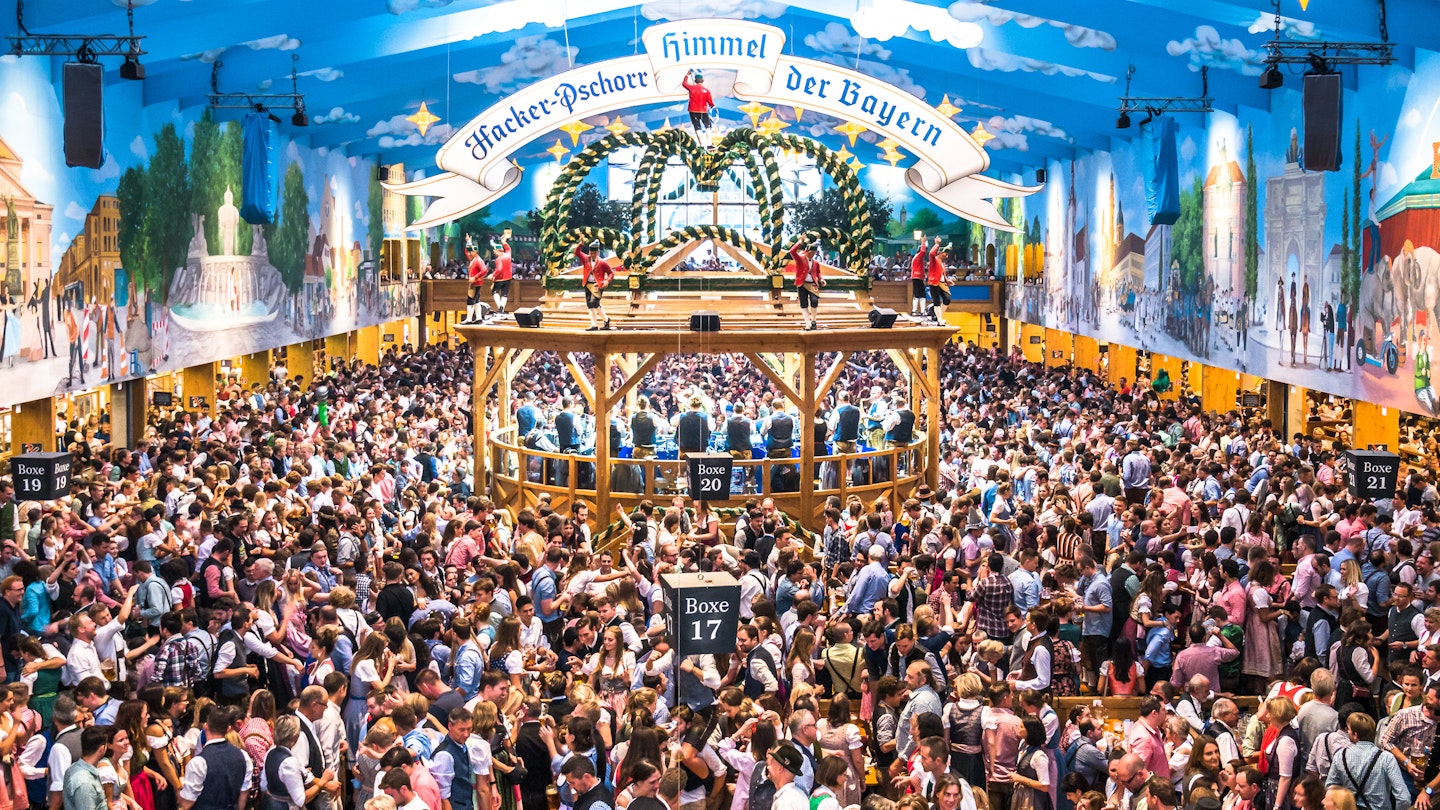Your Guide to Oktoberfest in Munich
Oktoberfest once again returns September 21 – October 6, 2024, for 17 days of joyous beer swilling. Every year, more than seven million thirsty visitors descend on the German city of Munich for a two-and-a-half week celebration featuring parades, fair rides, traditional food, music, and, of course, lots of beer.
Oktoberfest can be an exciting event for outsiders to experience Bavarian culture; however, it can be hectic and difficult to navigate for those uninitiated, particularly after a few liters of Löwenbräu. This year, more crowds than ever will pack the festival grounds. Fear not — we’ve got you covered with this guide to the festival of all festivals.
Milling the grain since 1810: a brief history of Oktoberfest
Oktoberfest began back in 1810 as a series of horse races honoring the marriage of Crown Prince Ludwig and Princess Therese of Saxe-Hildburghausen. This event was such a big hit that it became an annual celebration with more activities popping up every year. It wasn’t until the late 19th century that sausages and beer were introduced. Nowadays, keg-tapping and countless meaty morsels are the most recognizable aspects of the event, along with the traditional Bavarian garb.
The main attraction: the millions of liters of beer
The first highlight to mention is the sheer quantity of alcohol — almost 7 million liters of beer are served every year, complemented by 95,000 liters of wine. Waitresses adorned in traditional Dirndl and waiters in Lederhosen ferry giant frothing mugs, called Masskruege, to thirsty attendees. This act itself is a spectacle, as they often carry an unbelievable number at once — the current world record is for 26 full Masskrug!
All the great food that’ll accompany the beer
The second most exciting attraction is the food. Bavarians typically begin their day at Oktoberfest with some Weisswurst, a delicious white sausage made from veal and bacon meat. Lunch might consist of rotisserie chicken (Hendl), a roasted pork knuckle drowned in gravy (Schweinhaxen), or even more sausages. Throughout the day, visitors can indulge in pretzels, roasted almonds, or a traditional shredded pancake dish called Kaiserschmarrn whenever hunger strikes.
Oktoberfest etiquette essentials
To ensure you don’t make an Arsch of yourself at your first Oktoberfest, follow these simple do’s and don’ts from locals and regular attendees.
DO:
-
Wear the right clothes. Lederhosen and Dirndl are not compulsory, but if you’re going to commit, you should embrace the tradition. Wearing casual attire won’t attract unwanted attention, but a low-quality fancy dress costume might offend other festival attendees.
-
Eat before you start drinking. The hefty and filling food served in the tents is designed for those indulging in Masskruege.
-
Reserve a table for a better experience and to avoid the notoriously long lines.
-
Use the tents’ side entrances to limit your wait time.
-
Be mindful of how you tie your Dirndl; the placement of the bow conveys your relationship status.
-
Carry cash, as ATMs are sparse. Expect each beer to cost around €12.60 to €14.90.
-
Prepare for frequent renditions of “Angels” by Robbie Williams.
DON’T:
-
Standing on tables — you might find yourself on the wrong side of an Oktoberfest security guard.
-
While Lebkuchenherzen (gingerbread hearts) are cute, opt for some Kaiserschmarrn if you desire something sweet.
-
Don’t expect change from the wait staff, as any remainder from your tabs is assumed to be a tip.
-
Don’t leave accommodation arrangements to the last minute. Rooms fill up quickly with seven million visitors.
-
Avoid rides after indulging in food and drinks; your well-being is important.
-
Don’t drive; parking is a hassle and consuming beer makes driving home impossible.
-
Don’t be surprised to see people using tobacco, as sniffing is common in Bavaria.
Handy tips:
-
Beware of the Kotzhügel (Puke Hill) — it’s where overindulged festival-goers go to relieve themselves.
-
Keep an eye on your belongings to prevent theft; large public events can attract opportunists.
-
Remember, Oktoberfest celebrates Bavarian culture; visitors can learn a lot from various attractions and the festival experience.
How do I get there?
Munich’s Hauptbahnhof, the central station, is a short walk from Oktoberfest. Additionally, the nearest U-bahn stations are Theresienwiese and Schwanthalerhöhe. If driving, consider parking at a Park & Ride or in a car park and using public transport to reach the festival.
The wonders of Oktoberfest have spread beyond Germany, with the second-largest celebration in Kitchener-Waterloo, Canada. Similar events can be found in cities across the globe.




